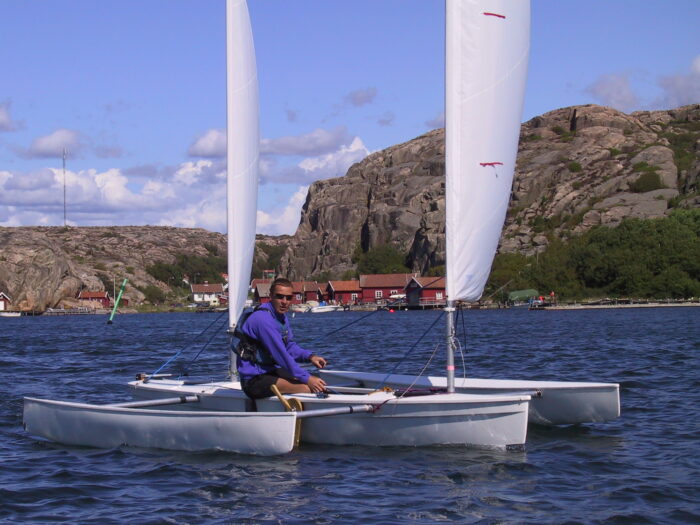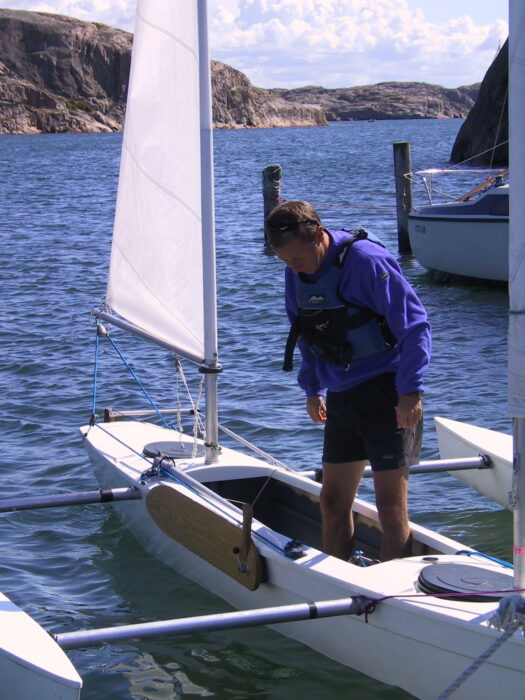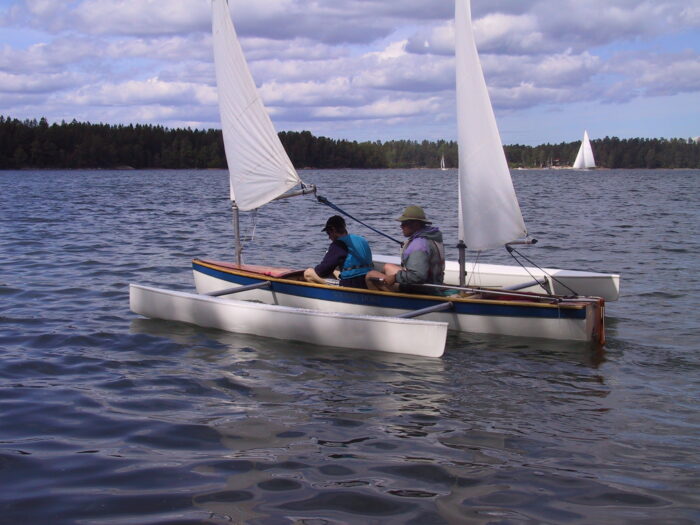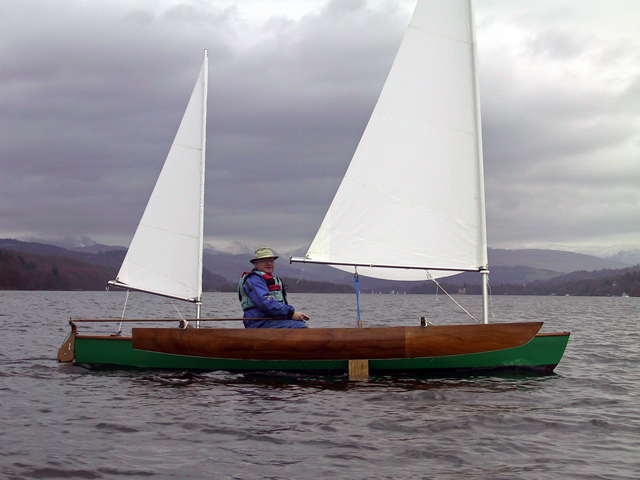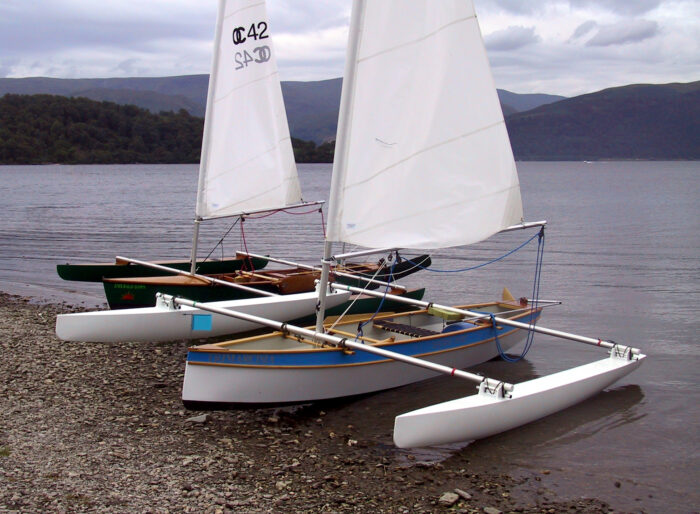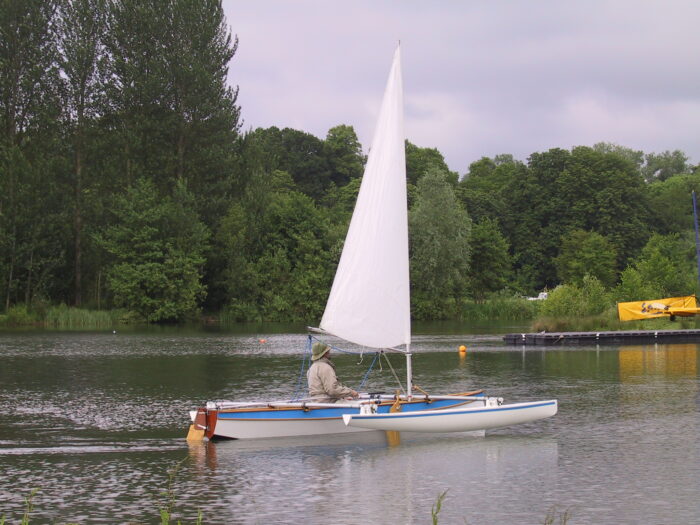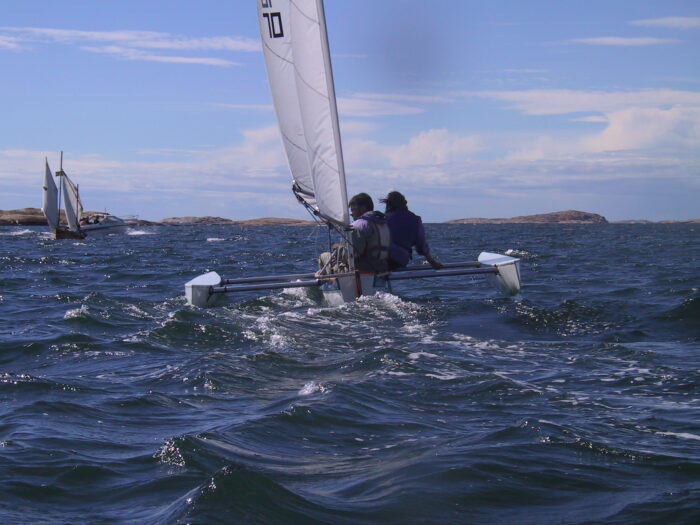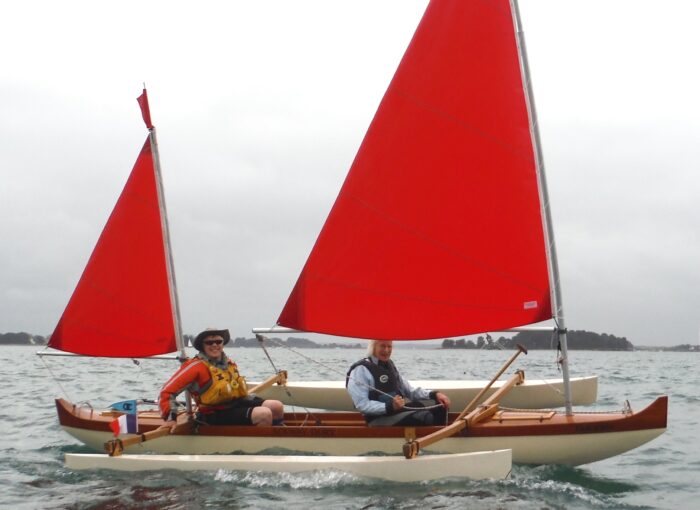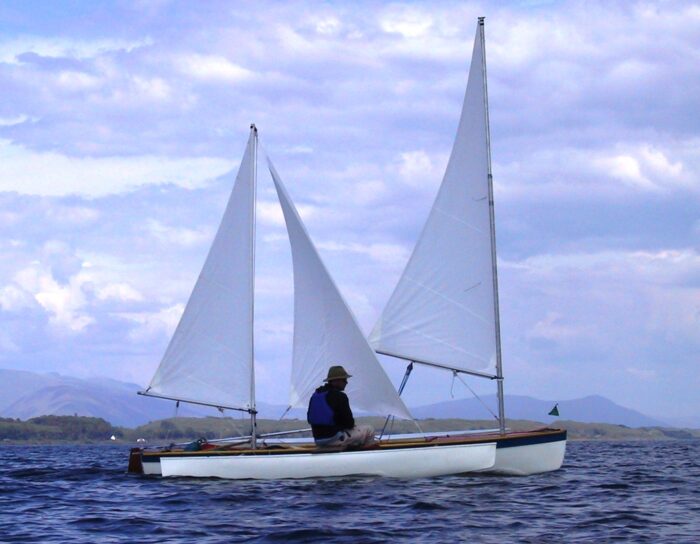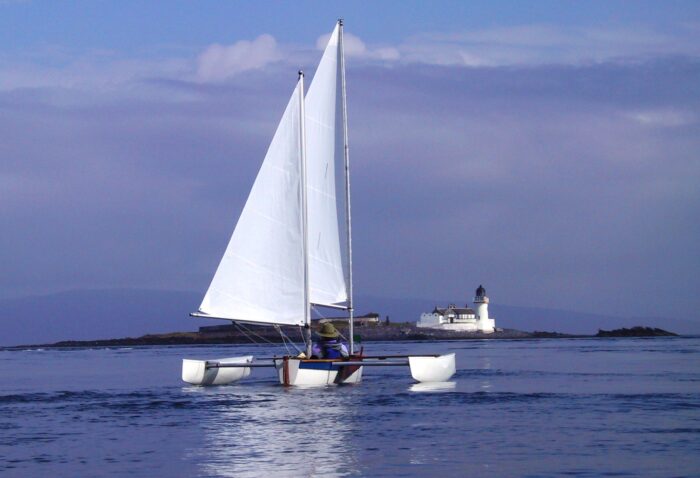A few group members started experimenting with trimarans in the early 2000’s. The main hull has a narrow waterline width of around 16 inches and a length of 16ft. This gives the hull a length to beam ratio of 12:1, and a minimum wetted area. These hulls can and do sail faster than a 16 ft monohull, especially downwind. They are designed to carry the outriggers just out of the water when running to minimise the drag from them.
As with the development of decked sailing canoes, the early trimarans were made from plywood. This allowed very seaworthy boats to be produced with an assembled weight of around 80lbs. Importantly though, the main hull, being the heaviest component, only weighed around 40lbs. This meant that the weight for car topping of the individual components was very light indeed. The outrigger beams were made from stronger heavier tube than the masts so that the rig couldn’t break the beams, and there were two of them. The outrigger floats had a buoyancy of around 200 lbs; on 10 ft beams they gave the boat a maximum righting moment of 1000 ft lbs.
The extra stability that the trimarans had over ordinary sailing canoes meant that it was possible for them to carry more sail area. As the trimarans developed, they started to carry larger ketch rigs, initially a 44 sq ft main and a 22 sq ft mizzen. Later ones had up to 88 sq ft of sail. This made them much faster than ordinary sailing canoes, but this then meant that, sailing with other canoes, they had to keep going back to keep in touch with their buddy group. We discouraged this and now would recommend a sail area of around 50 – 60 sq ft to sail in the group at meets.
Even the large trimarans that we have sailed are still very portable. They carry a portage trolley with them so it’s easy to get up the beach at the end of the day. The larger trimarans, though, did end up weighing more than the smaller ones as they had to be built stronger to take the strain of the larger rigs. Trimarans have allowed older less agile sailors to keep coming to the OCSG meets and also to go on expeditions with the more active sailors. The larger trimarans with large sails never caught on as the more modest sized trimarans do the job of adventure sailing without the weight.
Like all sailing canoes, when the wind dies, you can easily paddle a trimaran. Their easily driven hull is actually easier to paddle than ordinary canoes and they can be paddled long distances at 4 knots. It is also feasable to mount an electric outboard on the rear beam for easier long distance travelling in no wind, but at the moment most people would use a paddle. A trimaran can be easily paddled with a long kayak paddle, or a deep water single blade paddle.
Most of the trimarans sailed in the group are Solway Dory Ospreys. They are still in a minority compared to open canoes or decked canoes, but Mark Overwater at Solway Dory is still making and selling them, by special order.
Click on the first picture to start a slide show
